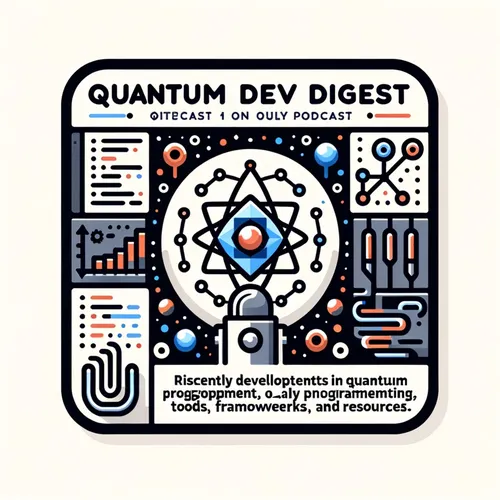Quantum Computing's Logical Leap: Chips, Qubits, and the 2025 Revolution
- Author
- Quiet. Please
- Published
- Sun 01 Jun 2025
- Episode Link
- https://www.spreaker.com/episode/quantum-computing-s-logical-leap-chips-qubits-and-the-2025-revolution--66356413
This is your Quantum Dev Digest podcast.
If you listen closely right now, you can almost hear the hum of the future—no, not from your laptop fans or the rustle of server racks, but something subtler, more profound. I’m Leo, the Learning Enhanced Operator, welcoming you to Quantum Dev Digest, where today’s episode catapults you straight into the heart of quantum computing’s most electrifying breakthrough.
This week, the big story isn’t a rumor or a speculative theory; it’s concrete, paradigm-shifting progress. Amazon, hot on the heels of Microsoft and Quantinuum, has just publicly unveiled its first quantum computing chip—marking a turning point not just for tech giants, but for the fabric of computation itself. Industry insiders like John Levy from SEEQC are calling these new quantum chips worthy of “Nobel Prize” acclaim. In fact, Microsoft’s quantum effort is based on an entirely new state of matter—neither solid, liquid, nor gas. Wrap your brains around that for a second: we’ve entered a phase of creating technology using matter in ways nature barely reveals to us.
Now, you might ask, why does this matter? Let’s make it tangible. Imagine you’re planning a cross-country road trip—not just plotting the shortest route from New York to San Francisco, but also figuring out every possible stop for gas, food, and scenic detours, balancing your time, budget, and spontaneous cravings. A classical computer is like a friend who checks every option sequentially—efficient, but soon overwhelmed as routes multiply. A quantum computer, powered by its army of qubits, is like having a million friends simultaneously exploring every possible permutation, distilling the optimal journey in record time.
That’s because, in the quantum realm, information isn’t just a matter of zeros and ones. Qubits can be both, neither, and everything in between, existing in superposition, entanglement, and coherence, opening the gates to an infinity of parallel paths. Each added qubit doubles the computer’s capacity, quickly surpassing what every server farm on Earth could compute in a traditional sense.
Here’s where today’s discovery comes into sharp focus. The chips arriving from Amazon and Microsoft aren’t just more powerful; they’re underpinned by logical qubits—engineered to correct their own errors and scale toward reliability. Think of it as an orchestra finally getting their instruments perfectly in tune, able to perform symphonies far too complex for a lone pianist tapping away at a keyboard. These logical qubits mean quantum computers are beginning to solve problems in minutes that would have taken classical supercomputers millions of years.
Let’s zoom in: In the cleanroom labs at Microsoft and at Amazon’s quantum division, you’d see a labyrinthine tangle of tubes and cryostats plunging temperatures close to absolute zero. The air snaps with the energy of innovation—technicians in full-body suits, measuring electromagnetic pulses so slight they barely disturb an electron. When the breakthrough chip is finally brought online, it’s not just a victory for one company, but a leap for the global quantum ecosystem: startups, banks, and pharmaceutical companies are pouring in investments, betting on quantum technology to accelerate drug discovery, revolutionize encryption, and even extend the periodic table itself.
Quantum simulations, already running on classical computers, are testing new algorithms so that the moment these chips mature, the software will be ready to unlock new scientific frontiers. People like Jainendra Jain at Penn State point out that these advances are the fruit of years—decades, even—of foundational research, now converging in a rare moment where theory and engineering synchronize.
But this isn’t some distant “someday” promise. 2025 has been declared by experts as the year to become quantum-ready. As these logical qubits proliferate, we’re on the...
